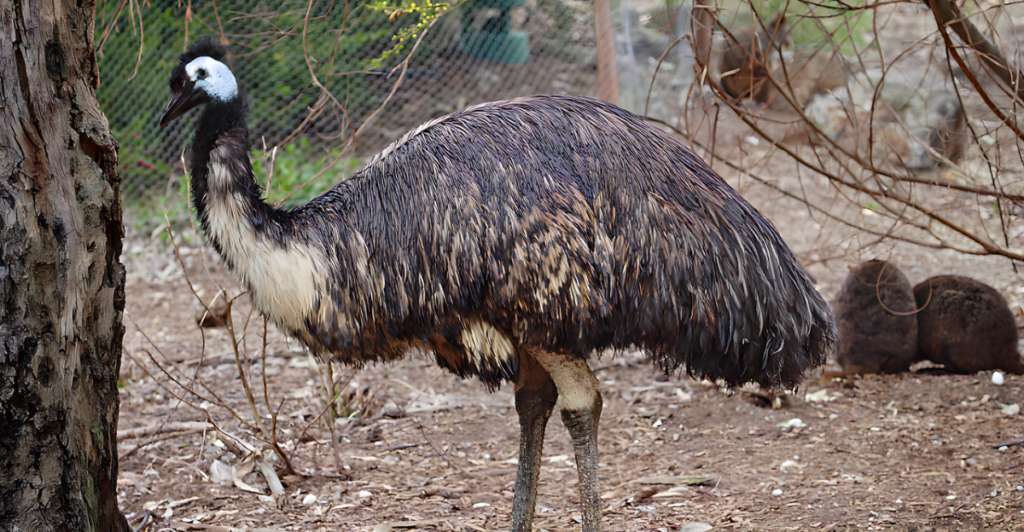
Ostriches and emus are two of the most iconic flightless birds, each with unique characteristics that set them apart. While they share many similarities, they couldn’t be further apart.
Geographic Distribution
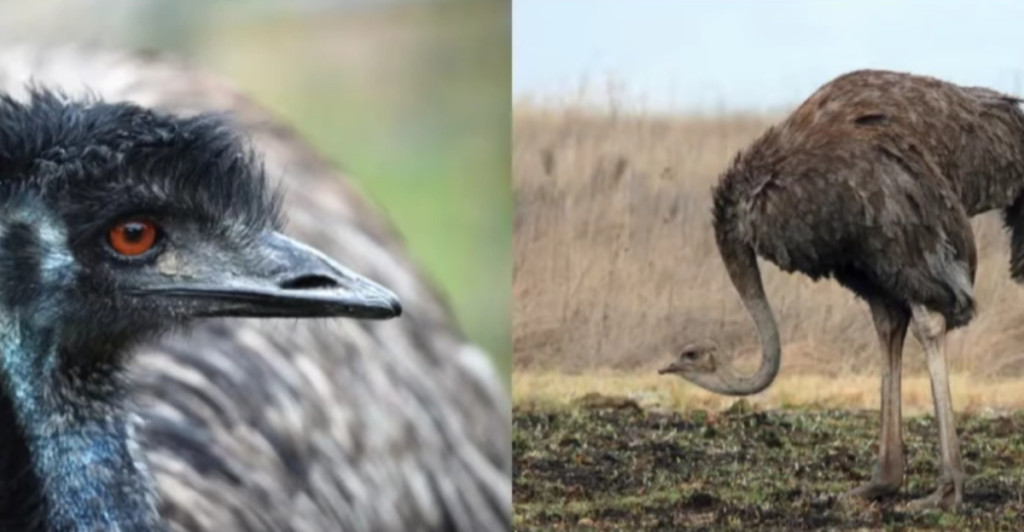
Ostriches are native to Africa and roam savannas, open woodlands, and deserts. Emus, on the other hand, are found exclusively in Australia’s wild, inhabiting grasslands, forests, and semi-arid regions. Their geographic separation has led to distinct adaptations that suit their respective habitats.
Size And Weight
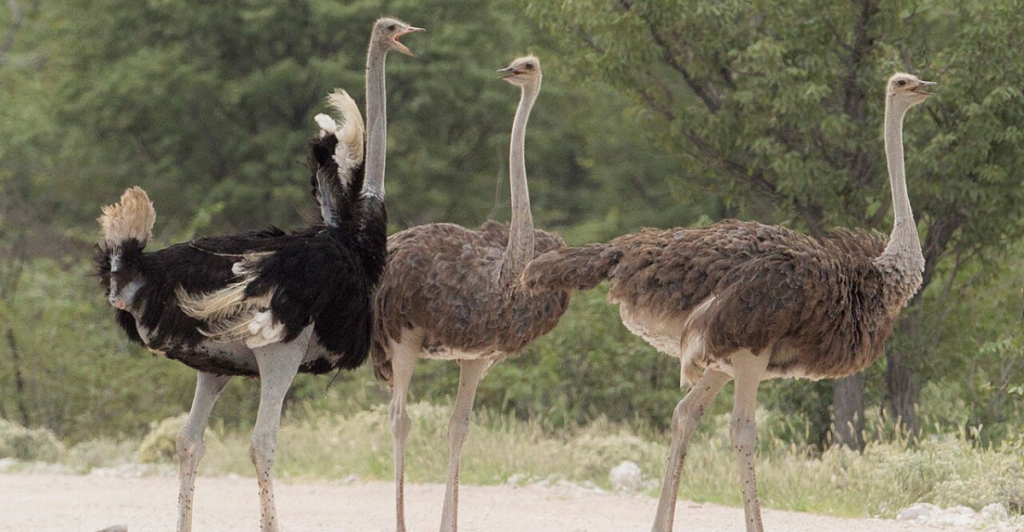
Ostriches are the largest and heaviest birds in the world, reaching up to 9 feet (2.7 meters) in height and weighing as much as 340 pounds (154 kg). Emus are smaller, typically standing around 5 to 6 feet (1.5 to 1.8 meters) tall and weighing up to 130 pounds (59 kg). This size difference affects their strength, speed, and survival strategies.
Speed And Agility
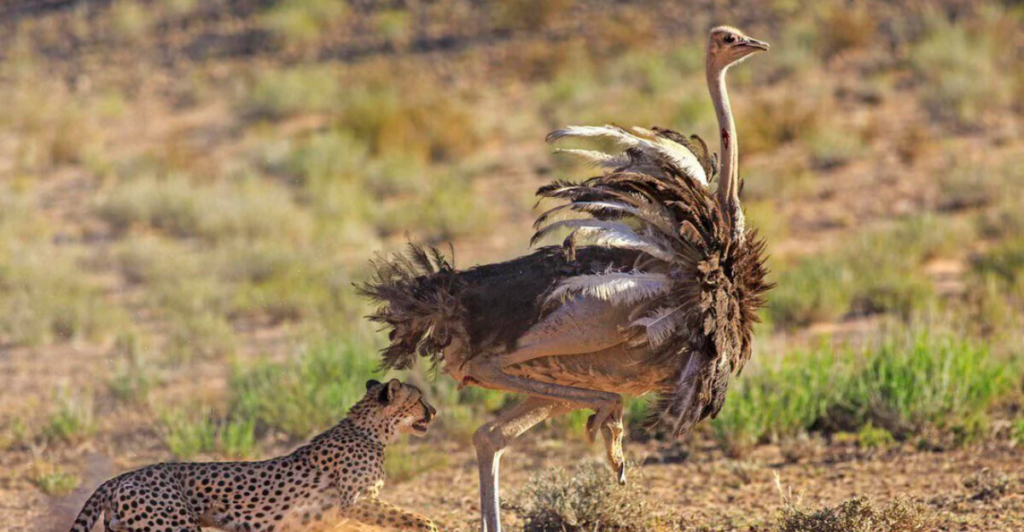
Both birds are speedy runners, but ostriches hold the title for the fastest land bird, reaching speeds of up to 60 mph (97 km/h) in short bursts. Emus, while slower, can still get impressive speeds of around 30 mph (48 km/h). Their long, powerful legs make them efficient runners, helping them escape predators.
Physical Appearance
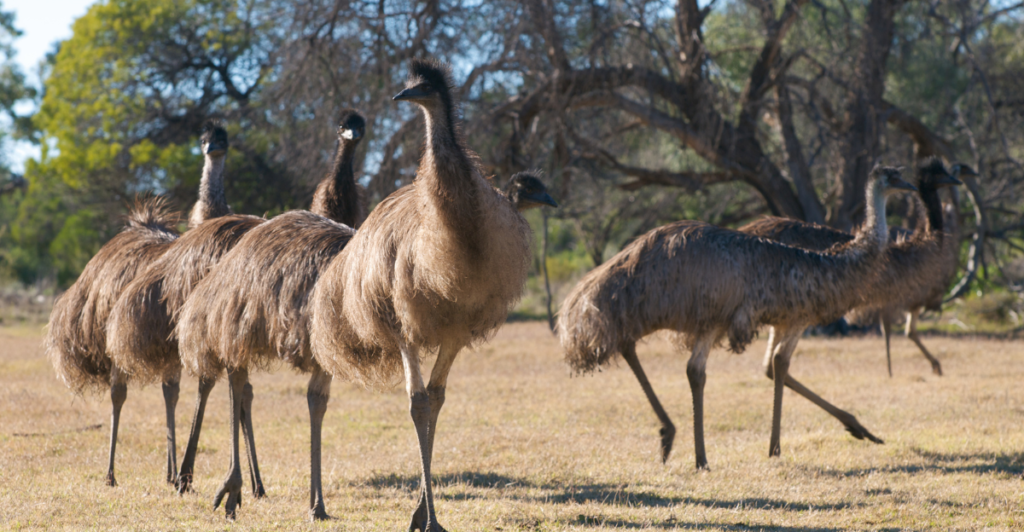
One of the most noticeable differences is their plumage. Ostriches have long, luxurious feathers that appear soft and fluffy, while emus have more coarse, hair-like feathers. Male ostriches are often black and white, while emus are a more uniform brownish-gray, providing better camouflage in their natural environment. Knowing these differences, they should be pretty easy to tell apart.
Legs And Feet
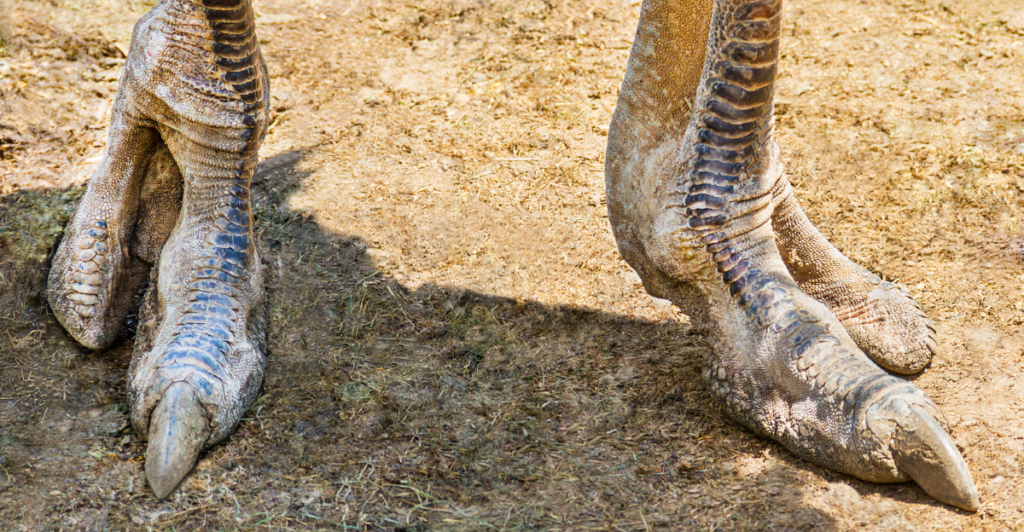
Ostriches have two toes on each foot, a unique feature that provides stability and enhances speed. On the other hand, Emus has three toes per foot, offering better traction on different terrains. The powerful legs of both birds are strong enough to deliver formidable kicks as a means of self-defense.
Mating And Reproduction
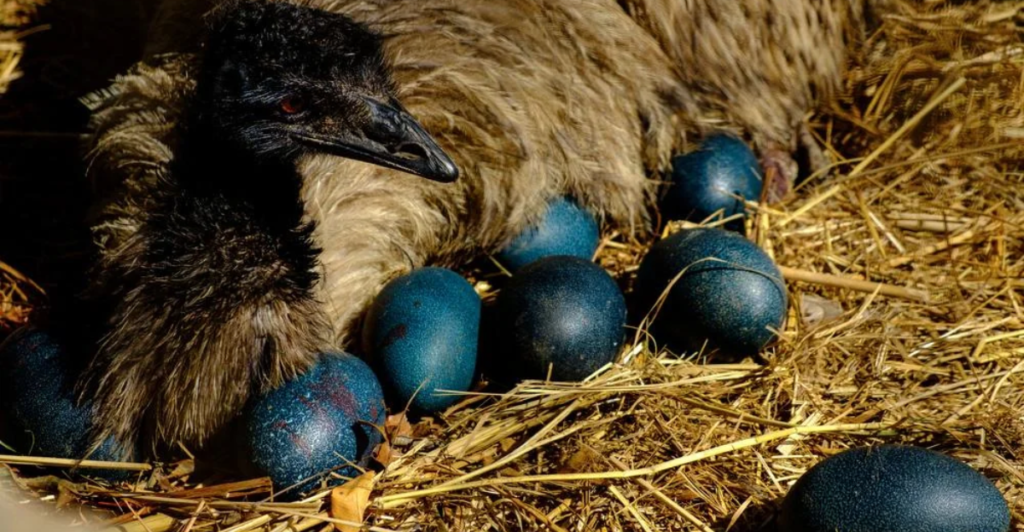
Ostrich mating involves a dominant male courting multiple females, but only one primary female lays eggs in a shared nest. Emus have a unique role reversal—males take the primary role in incubation, sitting on the eggs for around 56 days without eating or drinking much, while females may mate with other males.
Diet And Feeding Habits
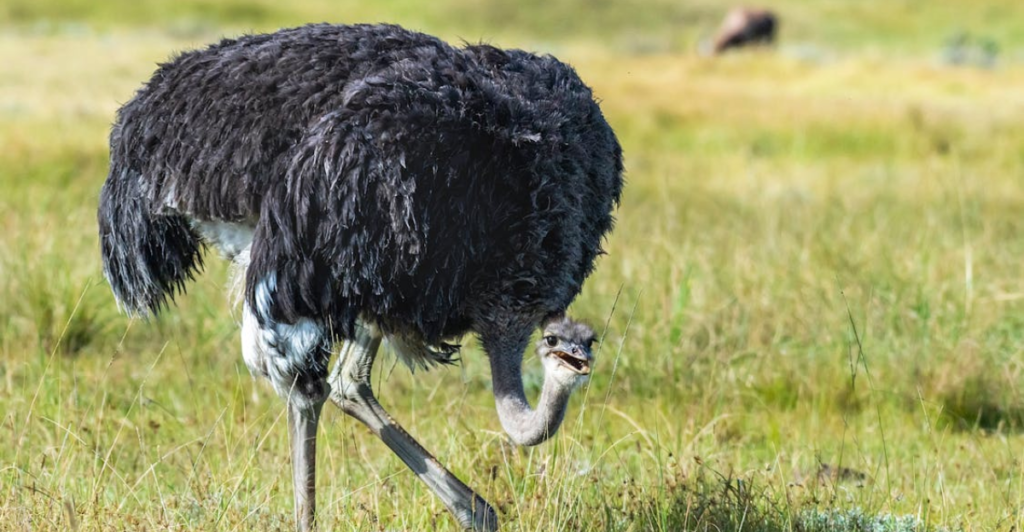
Both birds are omnivores, eating a mix of plants, seeds, insects, and small vertebrates. However, ostriches tend to eat a more varied diet, including tough desert plants, which they can digest with the help of small stones stored in their gizzard. Emus primarily forage for fruits, seeds, and insects in the Australian outback.
Lifespan And Predators
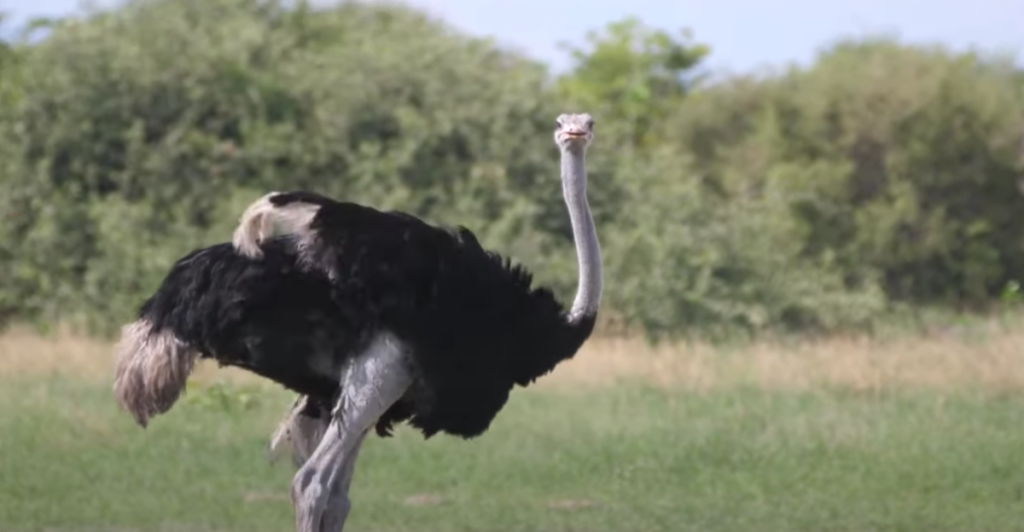
Ostriches generally have a longer lifespan, living up to 50 years in captivity, while emus typically live around 20 to 30 years. Their primary predators differ—ostriches must evade lions, hyenas, and cheetahs, while emus face threats from dingoes and wedge-tailed eagles in Australia.
Social Behavior
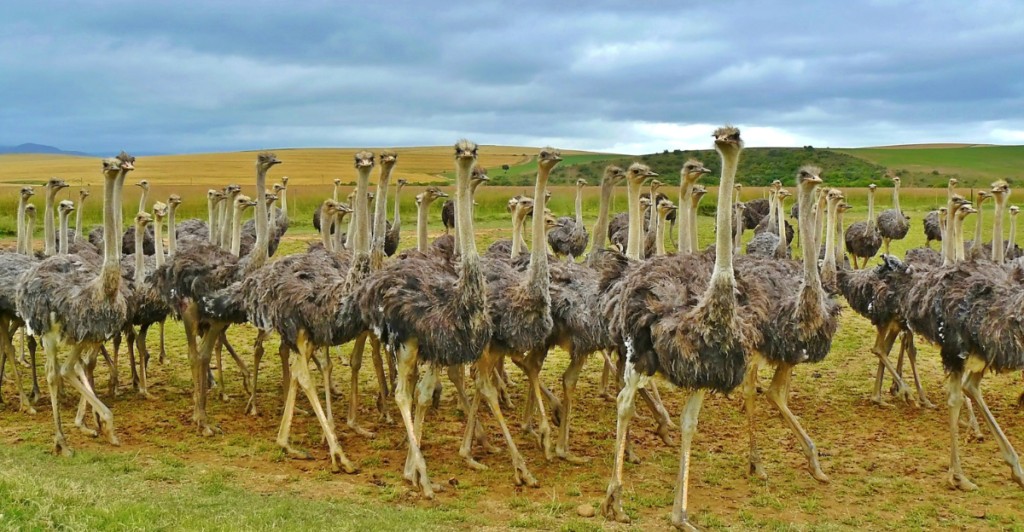
Ostriches and emus have very different social behaviors. Ostriches often form 5 to 50 bird flocks, particularly during the breeding season. On the other hand, Emus are more solitary or travel in loose groups, except during migration periods when they form larger flocks in search of food and water.
Sounds And Communication
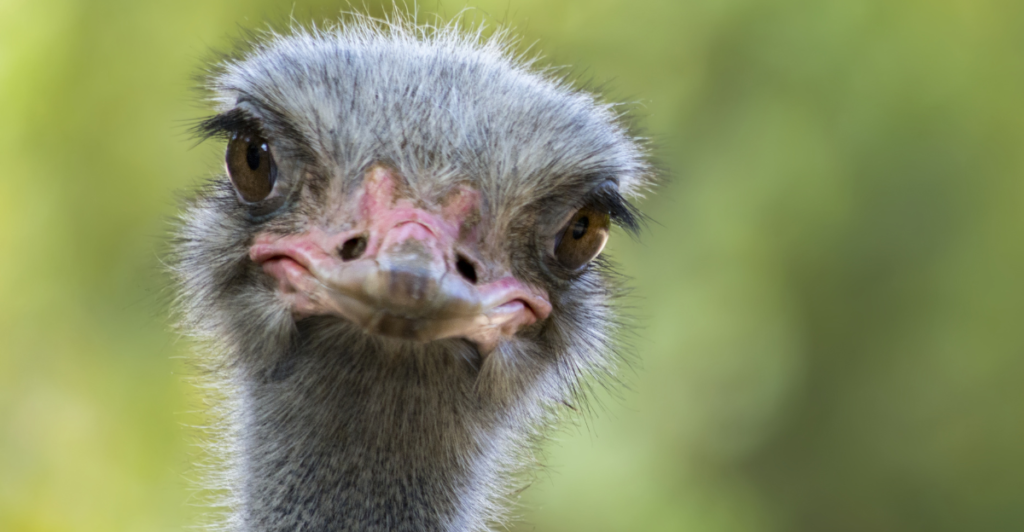
Ostriches communicate by producing deep booming sounds, hissing, and drumming noises. Their warning call might even be mistaken for a lion’s roar. Emus makes various sounds, including grunts and booming calls that can be heard up to two kilometers away. These vocalizations help with territory marking and mating displays.
Human Interaction And Farming
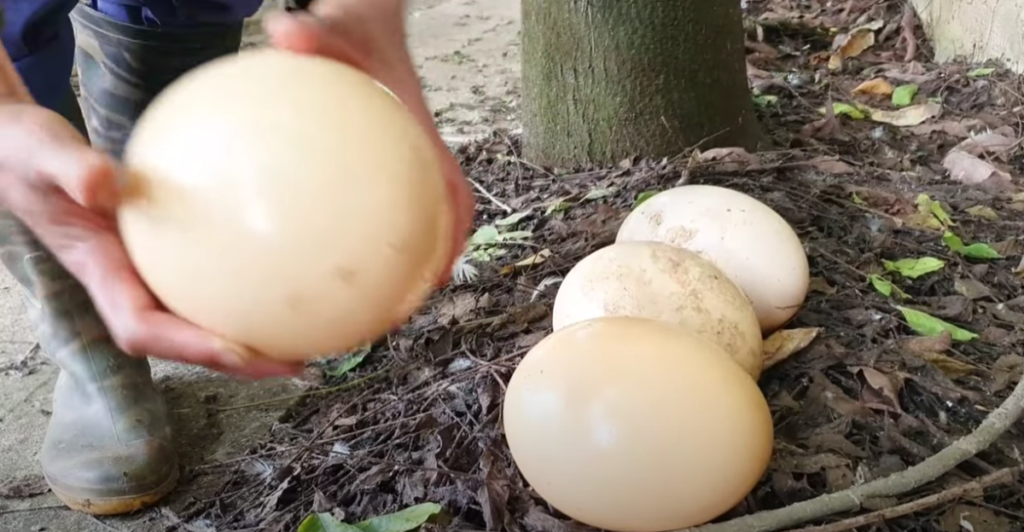
Ostriches and emus have been domesticated for their meat, leather, and feathers. Ostrich farming is particularly popular in South Africa, where their eggs, meat, and hides are highly valuable. Emus are farmed in Australia and other countries for their meat and oil, which is used in skincare products.
So Close But Yet So Far
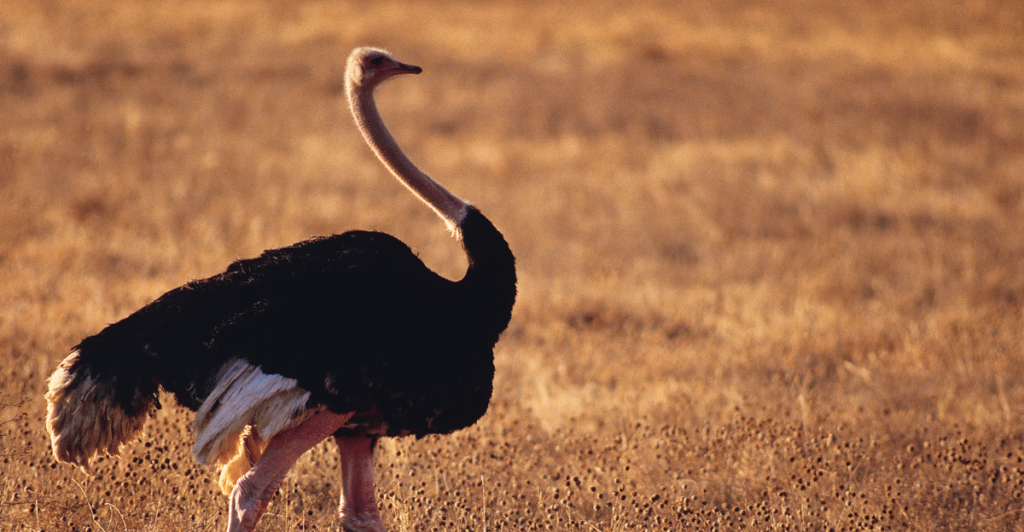
While ostriches and emus share common traits as significant, flightless birds’ differences in size, habitat, behavior, and physiology make them unique. Whether sprinting across the African savanna or roaming the Australian outback, these birds have evolved to thrive in their respective environments.
Discover more of our trending stories and follow us to keep them appearing in your feed

California Is Breaking Apart: A Fault Line Is Forming Faster Than Anyone Predicted
California Is Splitting Apart: A Fault Line Is Forming Faster Than Anyone Predicted
The War on Cows Is Over—And Green Extremists Have Lost
“There Will Be Eruptions”: Concerns Mount as Yellowstone Supervolcano Activity Shifts
References:
Reference 1
Reference 2
Reference 3
This article first appeared here
Stay connected with us for more stories like this! Follow us to get the latest updates or hit the Follow button at the top of this article, and let us know what you think by leaving your feedback below. We’d love to hear from you!







